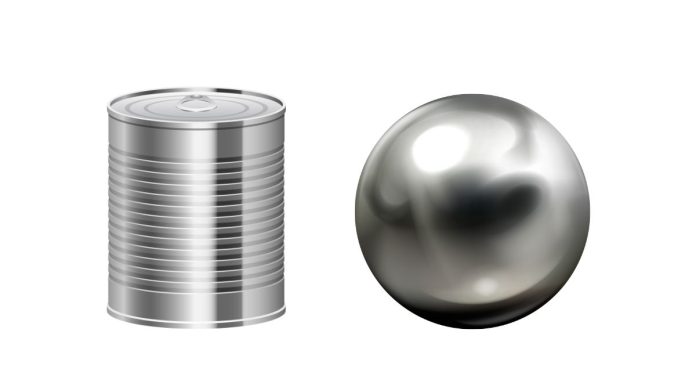Tin is a metal, specifically a post-transition metal. Here’s a more detailed explanation:
- Position in the Periodic Table:
- Tin is located in Group 14 (formerly Group IV-A) of the periodic table. It is situated below carbon, silicon, and germanium, which are elements that are considered nonmetals or metalloids, respectively.
- It is in the same group as lead and carbon, but unlike lead (which is more toxic and heavier), tin is much lighter and more malleable.
- Physical Properties:
- Appearance: Tin has a silvery-white color and a metallic luster. It’s shiny and reflective, characteristic of metals.
- Malleability: It is relatively soft and can be bent or shaped without breaking, which is typical of metals.
- Melting Point: Tin has a relatively low melting point of around 232°C (450°F), which is much lower than many other metals like iron or copper.
- Conductivity: Tin is a good conductor of heat and electricity, which is another key property of metals.
- Chemical Properties:
- Tin forms compounds by bonding with other elements, much like other metals do. For example, tin oxide (SnO or SnO₂) is an important compound used in various industrial applications.
- Corrosion Resistance: Tin is quite resistant to corrosion and does not rust easily. This makes it useful for coating other metals (like steel) to protect them from rust, a process known as tinning.
- Not a Nonmetal or Metalloid:
- Nonmetals are typically poor conductors of heat and electricity, have higher electronegativities, and form acidic oxides (like carbon dioxide, CO₂). Tin does not share these characteristics; it is metallic in its conductivity and physical properties.
- Metalloids have properties that are intermediate between metals and nonmetals. They can conduct electricity, but not as efficiently as metals, and they are often semiconductors. Tin, however, is more metallic than metalloids like silicon or arsenic.
Thus, tin is classified as a metal because it exhibits the typical characteristics of metals, such as electrical conductivity, malleability, and a shiny appearance, while lacking the properties of non metals or metalloids.



